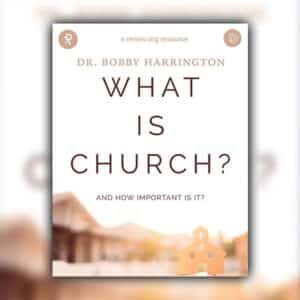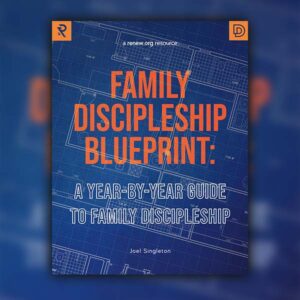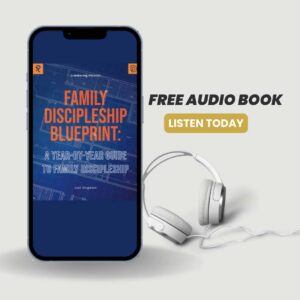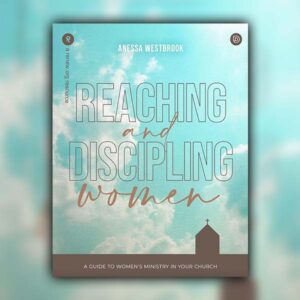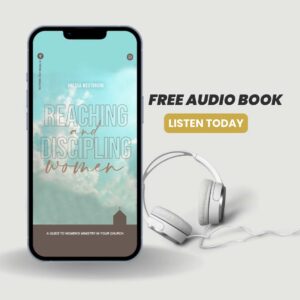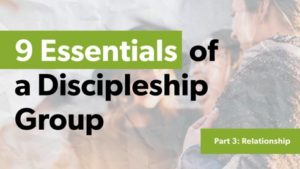Reach the Lost


This blog is an excerpt from the free eBook, Stay the Course: Seven Essential Practices for Disciple Making Churches.
Download this eBook here in your favorite format at no cost.
My greatest fear growing up was getting lost. It terrified me so much at times that while hunting as a young boy I considered never going in the woods again. My fear of being lost would sometimes even cause panic attacks. One particular time, when I was about 10 years old, my dad and I were deer hunting and an awful snowstorm blew in. The day was nearly over and we had only an hour or two left of daylight. I was walking alone back to our pickup truck, far enough from my dad that I could get lost. Then, the snow became blinding. I struggled to see even a few feet in front of me. The next five minutes felt like five hours as I struggled to get my bearings. I remember feeling short of breath, fighting the panic, and trying to keep my mind focused. I was terrified of being lost in the woods during a horrible storm. By God’s grace, I stepped out onto a main road and within 10 minutes after that, I made it to the truck where my dad was waiting. It took years of battling that fear to conquer it, and today I love the outdoors and the adventure of traversing God’s creation.
I think back to that day and draw parallels to the world around us now. When I see so many people lost and separated from God, my heart aches for them because I know the feeling. My stomach sinks as I consider that those who are spiritually lost have no idea of the perilous state they are in. It ignites a fire in my soul that I believe motivates me in my calling in Christian ministry.
Brandon Guindon, author of this article, will be teaching at the National Disciple Making Forum this year. Meet him and get more discipleship content like this in person at the 2017 National Disciple Making Forum.
This is one of the largest gatherings of disciple makers in North America with 65+ workshops, 15+ speakers, and 10+ tracks. Join us to learn practical ways to make disciples of Jesus this November 9-10 (Thursday-Friday). Register for the 2017 National Disciple Making Forum here.
A significant part of the discipleship process is reaching the lost. Unfortunately, what I have seen in the church today is that we alternate between two extremes. Either we establish our church structures to support a fortress mindset that appeals only to those who have made it inside the fort, or we focus solely on “getting people saved.” In either case the rest of the discipleship process is ignored or forgotten.
While I commend the courage of those who preach the gospel on a street corner or hand out literature with the path to salvation, I want to suggest a bigger and more holistic approach to our second guardrail principle, which is reaching the lost.
When Jesus walked the earth with his disciples, his method of ministry embodied the message he preached. Did you catch that? His methods embodied the message. His very life reflected the truth of the gospel. The message of the gospel is woven like fabric with the threads of grace, love, truth, forgiveness, and mercy. Jesus demonstrated in tangible ways each of those concepts so that the gospel became alive. The message of Jesus Christ was lived out in the method of Jesus Christ.
Jesus lived the message of the gospel by modeling it through action. We see this in the way he diffused the situation with the woman caught in adultery, how he gently but firmly revealed the sinful lifestyle of the woman at the well, and how he marveled at the faith of the Roman Centurion and healed his servant. He was the embodiment of the message. When he told his disciples to go and preach the Kingdom of God, he meant for them to not only teach the gospel with their words, but also to model the gospel in the way they lived their lives.
We as Christ followers are called to go and make disciples of Jesus Christ. Jesus makes this clear in the Great Commission of Matthew 28: “Go, therefore, and make disciples of all nations” (Matthew 28:19-20). This passage means that our churches must reach the lost—it’s part of our calling. We must individually reach out to those who are lost and help them find their way home. Also, our church and organization structure must work in such a way that we not only reach them, but also help them connect in the church. So, go out into the world and share your life with those around you. Even more, be the message of Christ as you walk out the methods of Christ.
The idea of sharing your life in a way that can reach lost people may seem ambiguous. That’s why many church leaders and pastors have asked me, “How do we do that?” I tell them, “You have to choose to go after them.” That’s where it starts. The church has at times adopted a “build it and they will come” mentality. Some may join a group or attend your church on their own initiative, but most will not. You have to open up your life and get in the trenches with people. Amber and I do everything we can to connect with lost people. We invite them into our home, we have neighborhood barbeques, and we invite families from our kids’ sports teams to just hang out with us. We choose to go after people by opening up and sharing our lives with them. It’s why I titled this principle, “reach the lost” and not “catch the lost.” We have to reach out, go after, and pursue the lost by sharing our lives.
Implementing this principle starts with you as a leader. Sharing our lives with the lost must define who we are. Some argue, “Well, I do not have the gift of evangelism.” It is true that we all have different gifts, but every one of us can share our lives with the world around us. That clearly communicates that we are Christ followers. I believe we have damaged the church by so strongly segregating spiritual gifts. Reaching the lost is everyone’s job, not just one pastor that has a specific gift.
Staff and leaders in the church should model for ministry volunteers a lifestyle of sharing their faith and making disciples. This practice will then become part of the culture of a church. When we resist segregating evangelism to a department, our church body begins to live out the principle. It becomes a protective guardrail against thinking that only certain people are qualified to share their faith. Our staff, leaders, and volunteers can then work together to develop strategies and seek organic ways to reach anyone and everyone that is outside our walls.
*Stay tuned by coming back to our blog for more in this blog series about staying the course from Brandon Guindon.
by Brandon Guindon
This blog is part of the free eBook, Stay the Course: Seven Essential Practices for Disciple Making Churches.
You can down it by clicking here.
Brandon Guindon has over 15 years experience leading churches to become disciple-making bodies of Christ. Brandon holds a Bachelor of Science in Health Science from Linfield College and a Master of Arts Church Leadership and New Testament Theology from Hope International University. He was ordained at Real Life Ministries in Post Falls, ID. He is a published author and a member of the Board of Directors for the Relational Discipleship Network. The Guindons (Brandon and Amber, Emma, Olivia, Grady, and Garrett) moved to Houston in 2013 from their home state of Idaho.
If you have enjoyed reading this, please consider joining our email list!
